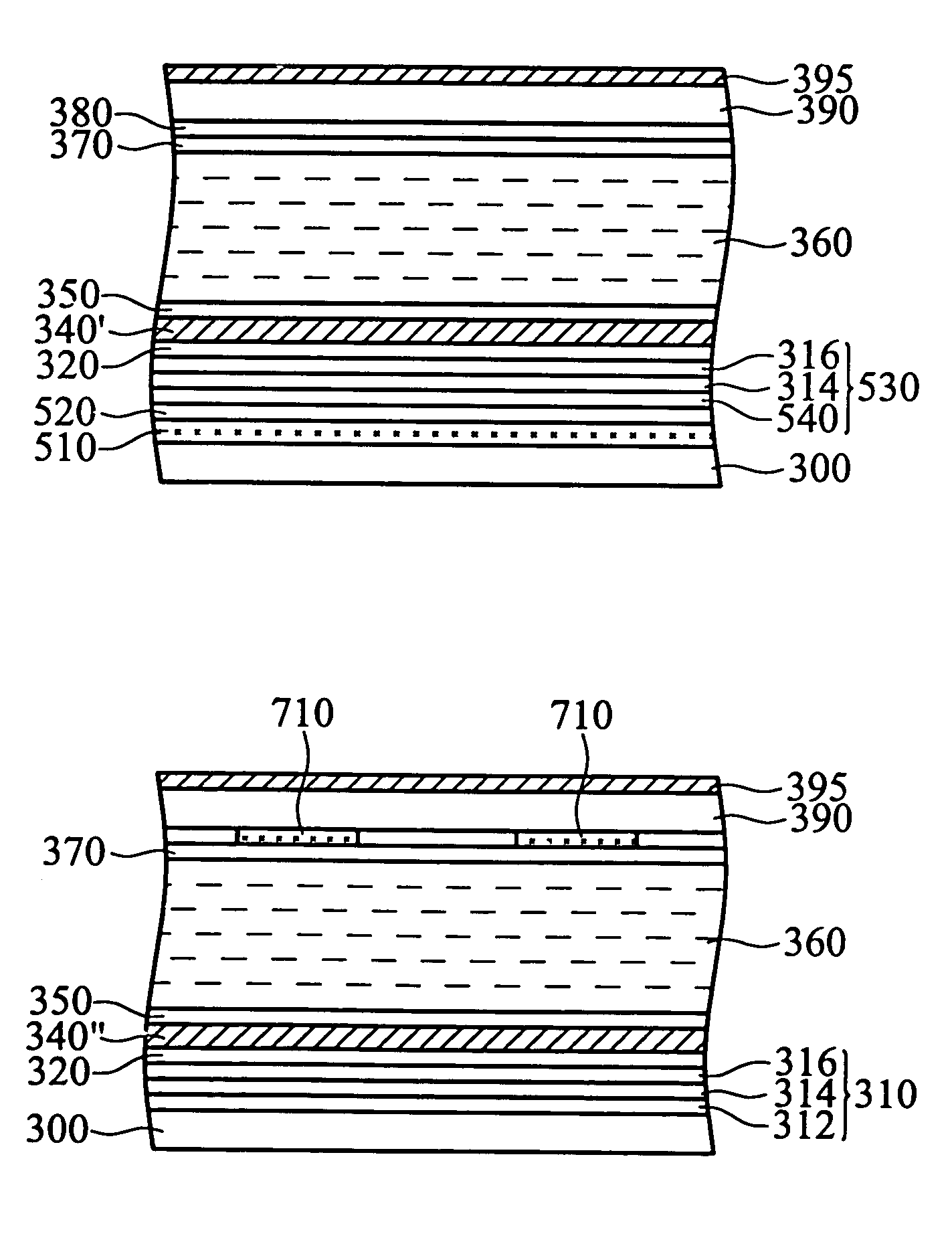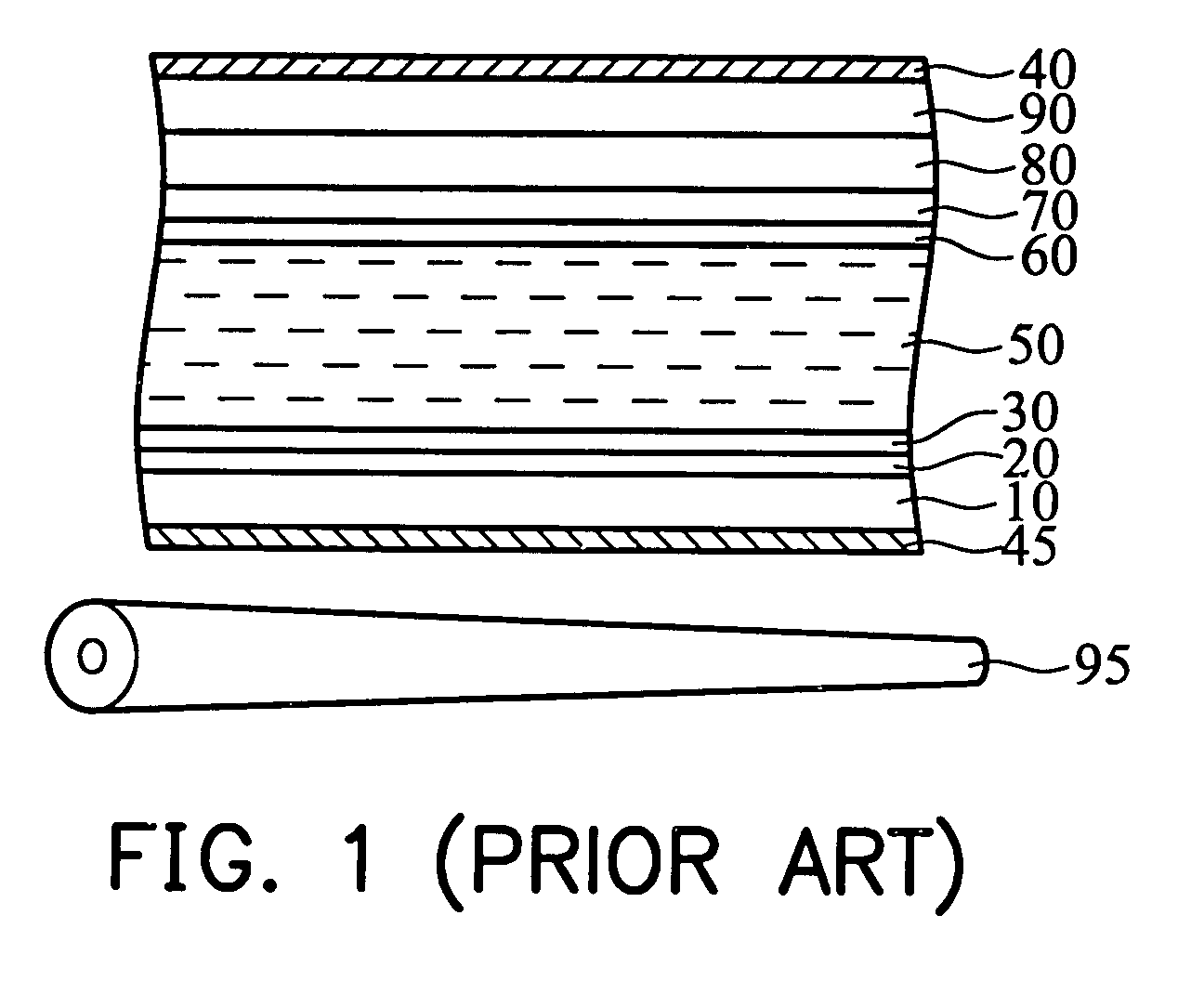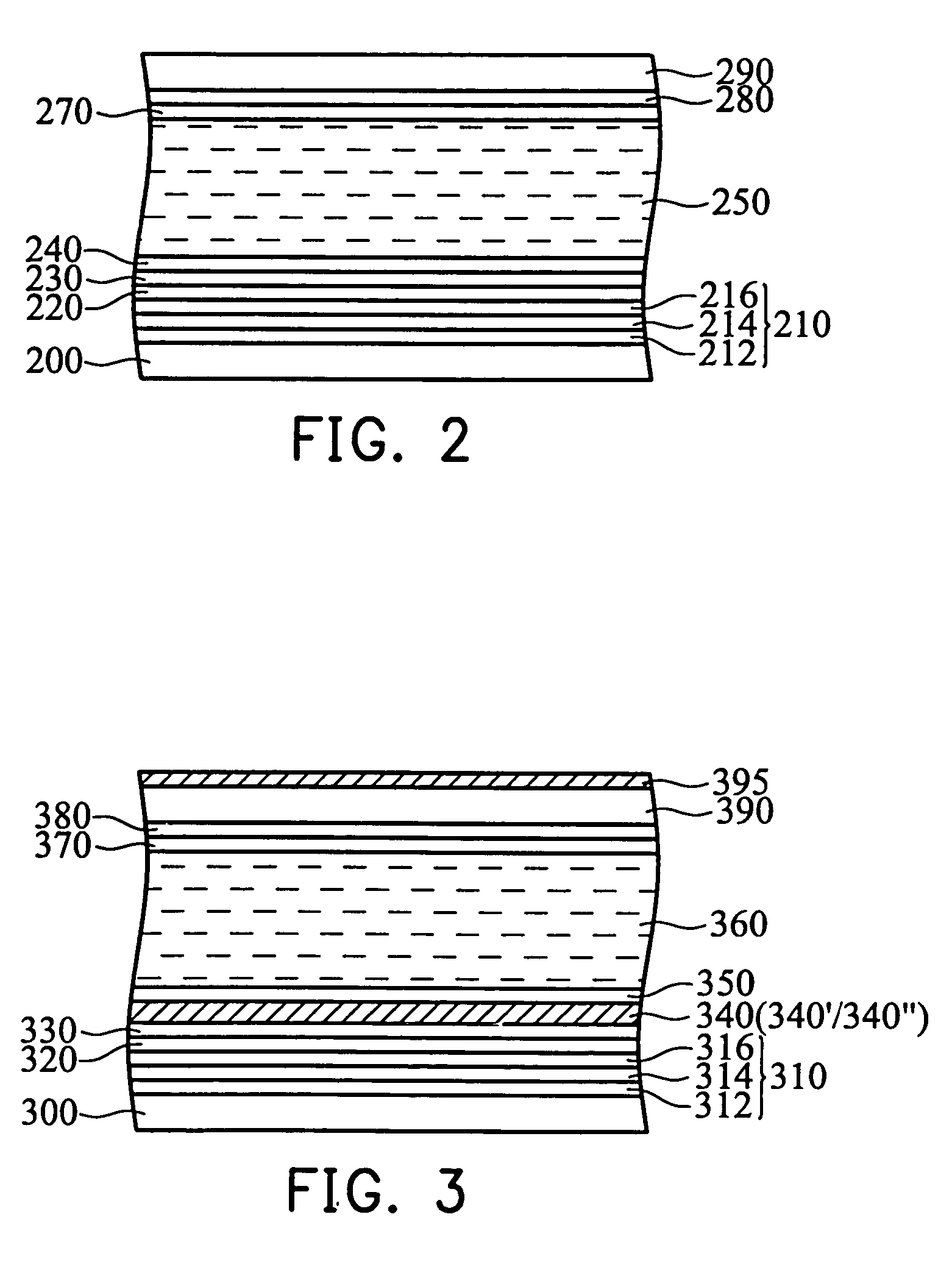Liquid crystal display device
a liquid crystal display and display device technology, applied in non-linear optics, instruments, optics, etc., can solve the problems of reducing the efficiency of light utilization, limiting scaling development, and thicker conventional backlight modules with fluorescent lamp sources, so as to reduce the weight and thickness of the liquid crystal display device, and enhance light utilization efficiency.
- Summary
- Abstract
- Description
- Claims
- Application Information
AI Technical Summary
Benefits of technology
Problems solved by technology
Method used
Image
Examples
first embodiment
[0027]FIG. 2 is a sectional view of a liquid crystal display device according to a first embodiment of the present invention.
[0028]In FIG. 2, a first substrate 200 is provided. The first substrate 200 can be glass or flexible plastic and can be transparent or opaque.
[0029]In FIG. 2, an organic electroluminescent display (OLED) element 210 serving as a backlight source is formed on the first substrate 200. A method for forming the OLED element 210 follows, but is not intended to limit the OLED process and the OLED profile of the present invention. For example, a cathode 212 is formed on the first substrate 200. An organic emitter layer 214 is formed on the cathode 212. Then, an anode 216 is formed on the organic emitter layer 214. The cathode 212 is commonly a metal electrode, such as Mg—Ag alloy or Li—Al alloy. The organic emitter layer 214 can comprise doped polymers which can emit different colors of light (e.g. red, green, and blue). The anode 216 is a transparent electrode, such...
second embodiment
[0036]FIG. 3 is a sectional view of a liquid crystal display device according to a second embodiment of the present invention.
[0037]In FIG. 3, a first substrate 300 is provided. The first substrate 300 can be glass or flexible plastic and can be transparent or opaque.
[0038]An organic electroluminescent display (OLED) element 310 serving as a backlight source is formed on the first substrate 300. As a method for forming the OLED element 310 follows, but is not intended to limit the OLED process and the OLED profile of the present invention. For example, a cathode 312 is formed on the first substrate 300. An organic emitter layer 314 is formed on the cathode 312. Then, an anode 316 is formed on the organic emitter layer 314. The cathode 312 is commonly a metal electrode, such as Mg—Ag alloy or Li—Al alloy. The organic emitter layer 314 can comprise doped polymers which can emit different colors of light (e.g. red, green, andblue). The anode 316 is a transparent electrode, such as ITO ...
third embodiment
[0048]FIG. 5 is a sectional view of a liquid crystal display device according to a third embodiment of the present invention. Elements in FIG. 5 repeated from FIG. 3 use the same reference numbers. Additionally, because some materials and processes of the parts in the third embodiment are the same as the above, hence, their description is omitted. The difference between the third and second embodiments is that the LCD device of the third embodiment has a retardation film and a reflective layer disposed below the first polarizer (the reflective polarizer), thereby improving light utilization efficiency.
[0049]In FIG. 5, a first substrate 300 is provided. A reflective layer 510, such as aluminum, is formed on the first substrate 300. Then, a retardation film 520, such as a ¼λ retardation film, is formed on the reflective layer 510.
[0050]An organic electroluminescent display (OLED) element 530 serving as a backlight source is formed on the retardation film 520. The OLED element 530 comp...
PUM
| Property | Measurement | Unit |
|---|---|---|
| operating temperature | aaaaa | aaaaa |
| transparent | aaaaa | aaaaa |
| voltage | aaaaa | aaaaa |
Abstract
Description
Claims
Application Information
 Login to View More
Login to View More - R&D
- Intellectual Property
- Life Sciences
- Materials
- Tech Scout
- Unparalleled Data Quality
- Higher Quality Content
- 60% Fewer Hallucinations
Browse by: Latest US Patents, China's latest patents, Technical Efficacy Thesaurus, Application Domain, Technology Topic, Popular Technical Reports.
© 2025 PatSnap. All rights reserved.Legal|Privacy policy|Modern Slavery Act Transparency Statement|Sitemap|About US| Contact US: help@patsnap.com



